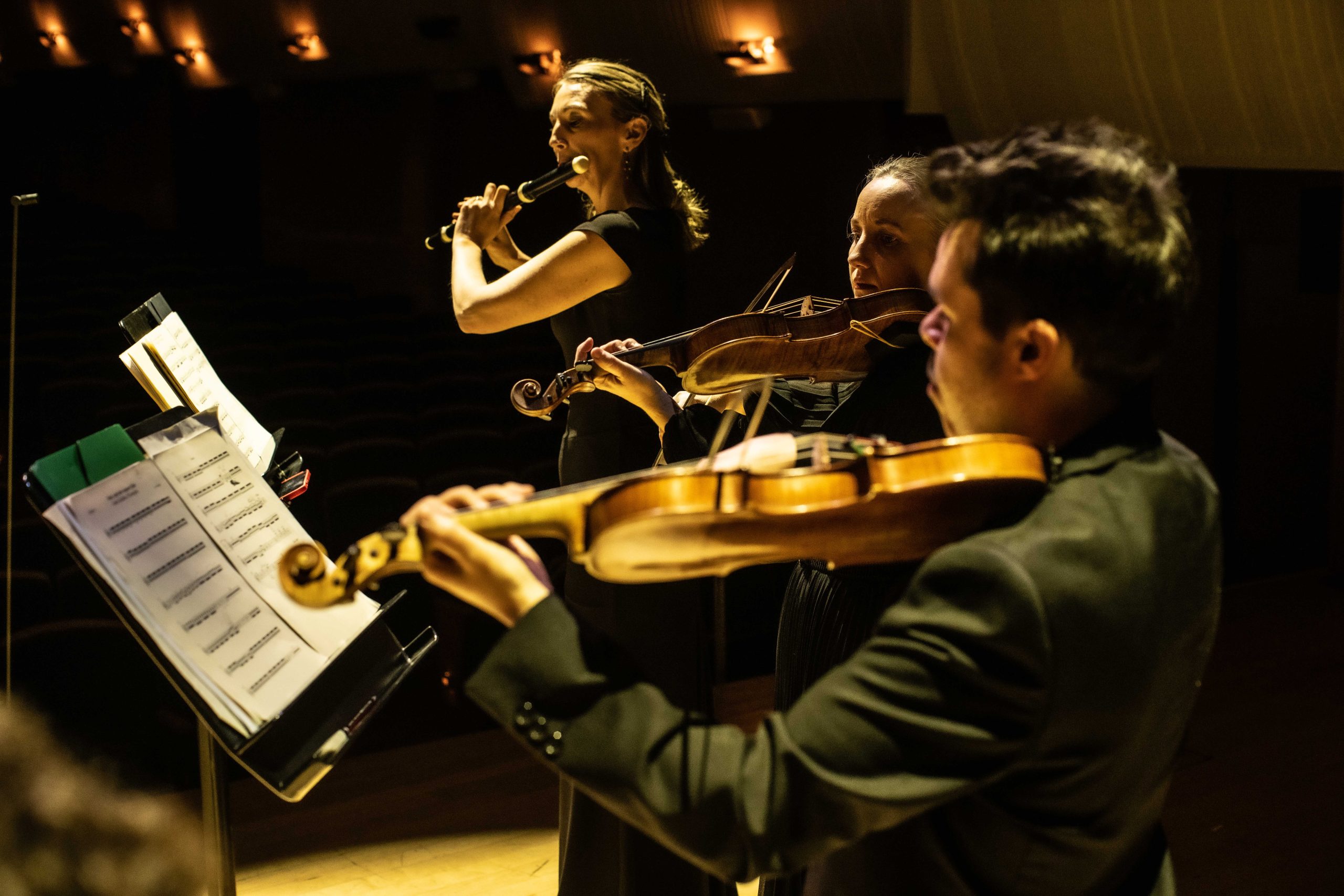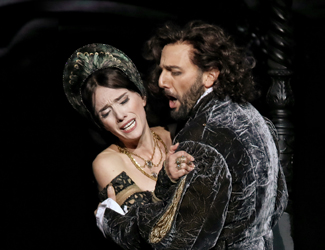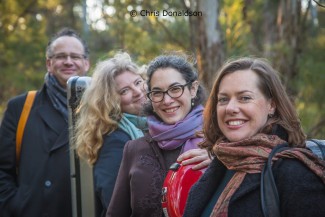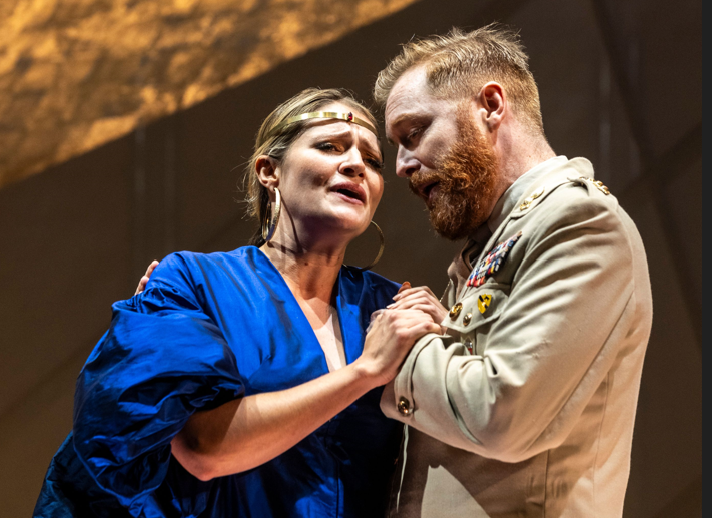Concert Review: Die Stille Nacht/ Australian Haydn Ensemble/Greco/Farrow
The Australian Haydn Ensemble’s Die Stille Nacht featuring baritone David Greco and flautist Melissa Farrow, reached beyond the era by which it is defined and presented a charming selection of Baroque works by Vivaldi, Telemann, Hasse and Biber.
The ensemble, playing on period and replica instruments was led from the violin by artistic director Skye McIntosh with second violinist Matthew Greco, Karina Schmitz on viola, cellist Anton Baba, Pippa McMillan playing double bass and Anthony Abouhamad at the harpsichord. It was a busy program of chamber works, two flute concerti and selections for baritone soloist and chamber ensemble, which transported us to the sounds and the entertainment of the era.
Vivaldi’s Concerto for Strings in F major RV 136 served as a bite-sized appetiser introducing four arias by Vivaldi, sung by Greco with the ensemble. Vivaldi’s concert arias and cantatas are a sorely neglected collection of beautifully melodic and orchestrated works. The first two arias were well paired, Chi alla colpa from Armida al campo authoritatively sung, its rapid-fire passages precisely articulated. Flute and voice entered into dialogue with the delicate fluttering and lyrical lines of Veni, veni me sequere fida from Juditha Triumphans, the burnished tones of Greco’s voice a striking contrast to the delicacy of Farrow’s flute line, merging into a flourishing cadenza at the end. In Oribile lo scempio we heard the distinctive baroque ‘rage’ aria with its extended lines of coloratura, arriving at the plum of the selection, the slow-burning Gelido in ogni vena from Farnace, so typically Vivaldian in its style. Greco drew a spectrum of colours in the recitative, with gracefully phrased descending sequences, ornamented in the da capo (repeat) section.
Melissa Farrow took centre stage for two flute concerti, Vivaldi’s La Notte in G minor, RV 439 and the Concerto for Flute in B minor by Hasse. The six short movements of Vivaldi’s concerto encapsulated the essence of his writing with its shifting harmonies and emulation of nature. The ensemble transported us into the night with the dark suspense of the opening Largo, the second movement sub-titled Fantasmi (phantoms), the motoric, arpeggiated Presto and hushed, soporific second Largo (Il sonno) (sleep), built up from the lower strings. The piece by Hasse was a refined illustration of Farrow’s virtuosity on the flauto traverso, with a light and lucent middle movement Adagio keeping company with the two violins ending in a high-octane bravura third movement Allegro.
The Sonata à 4 in A minor by Telemann was an apt introduction to excerpts from his cantata, Der am Ölberg zagende Jesus (Die Stille Nacht). Deft orchestration and superb interpretation created a dramatic realisation of this Biblical scene as Christ enters the Garden of Gethsemane on the eve of His crucifixion. In the opening aria, Greco takes the role of the narrator describing the scene with mournfully treading instruments. In the arias Ich bin betrübt bis in den Tod (I am sorrowful unto death) and Mein Vatter (My Father!) he takes the voice of Christ, accepting His fate as the instruments peel away to nothing.
The advertised line up ended as it began, with a brief but entertaining miniature, this time, selections from Serenade à 5 Der Nachtwächeterlied by Biber. After an instrumental introduction, the strings dispensed with their bows providing a delicate plucked accompaniment to Greco’s portrayal of a Salzburg night watchman. The melody was simple, no more than 5 notes in range, and in the style of a cantus firmus, the pizzicato strings sounding like stars glinting in the night sky.
A generous encore followed, the entire ensemble gathering for Mentre dormi, Amor fomenti from L´Olimpiade by Vivaldi.
The AHE has successfully explored a very different style with this repertoire. Greco’s voice is rich in its lower range, straight-toned and pure, with a beautiful bloom in the upper register, even reaching into a hushed head voice. He is certainly a valued exponent and champion of early music for the solo voice. At the opposite end of the sound spectrum, we heard Farrow draw a sweep of colours and textures with her athletic playing. The combination of the two was magical, with the ensemble as ever, performing with verve and style.








13nuiu